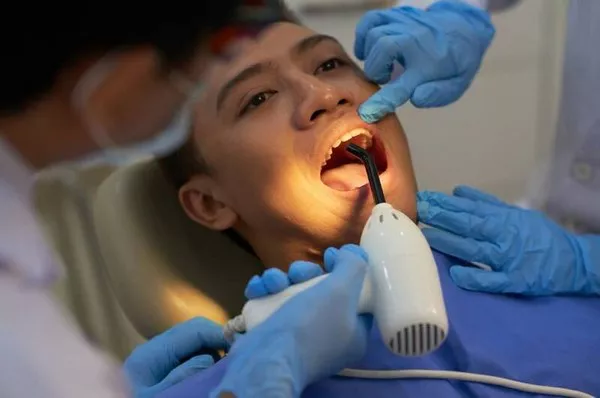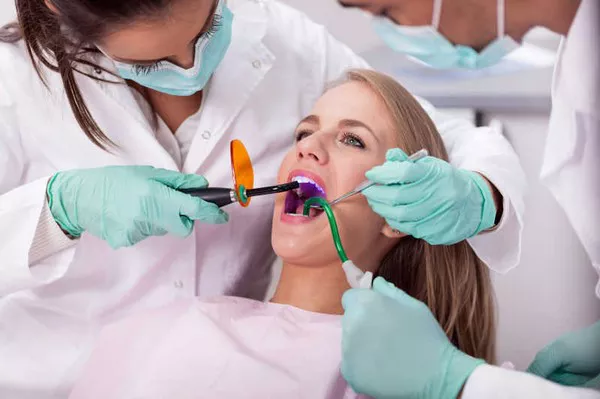Dental fillings are a common and effective way to restore teeth damaged by decay or trauma. However, concerns about potential infections may arise, leading to questions about the vulnerability of tooth fillings to microbial invasion. In this comprehensive article, we will explore the factors that may contribute to a tooth filling getting infected, preventive measures, and the importance of regular dental check-ups.
1. Introduction
Dental fillings play a vital role in preserving the structure and function of teeth compromised by cavities or damage. While fillings are generally successful in restoring teeth, there is a possibility of infection under certain circumstances. Understanding the factors that contribute to this risk is crucial for maintaining optimal oral health.
2. The Purpose of Dental Fillings
2.1. Restoring Tooth Structure
Dental fillings are primarily used to restore the structure of a tooth that has been compromised by decay. The filling material replaces the lost tooth structure, preventing further decay and enhancing the tooth’s functionality.
2.2. Sealing Cavities
One of the key functions of dental fillings is to seal cavities, preventing bacteria and debris from entering the vulnerable areas of the tooth. This sealing action is essential for protecting the inner layers of the tooth from further decay.
3. Factors Contributing to Infection of Tooth Fillings
3.1. Inadequate Seal
If a dental filling fails to create a proper seal with the tooth, there is a risk of bacterial infiltration. This inadequate seal may result from factors such as improper placement, material shrinkage, or wear and tear over time.
3.2. Presence of Microgaps
Over time, wear and tear or gradual changes in the filling material can create microgaps between the filling and the tooth. These tiny openings provide an entry point for bacteria, leading to potential infection.
3.3. Recurrent Decay
If decay develops around the edges of a filling, it can compromise the seal and allow bacteria to penetrate the tooth. This is known as recurrent decay and poses a risk of infection if not addressed promptly.
4. Signs of an Infected Tooth Filling
4.1. Tooth Sensitivity
Increased sensitivity to hot or cold temperatures may indicate an issue with a tooth filling. Persistent sensitivity could be a sign of infection or other complications.
4.2. Pain or Discomfort
Pain or discomfort, especially during biting or chewing, may suggest a problem with a tooth filling. This could be due to an infection or damage to the surrounding tooth structure.
4.3. Swelling or Pimple on Gums
In some cases, an infected tooth may cause swelling or the appearance of a pimple-like bump on the gums. This can be a manifestation of an abscess, indicating infection.
5. Preventive Measures to Avoid Infection
5.1. Regular Dental Check-ups
Regular dental check-ups are essential for monitoring the condition of dental fillings and detecting any signs of potential issues. Early detection allows for timely intervention and preventive measures.
5.2. Proper Oral Hygiene Practices
Maintaining good oral hygiene is crucial in preventing infections. Brushing teeth twice a day, flossing regularly, and using an antiseptic mouthwash help reduce the risk of decay and ensure the longevity of dental fillings.
5.3. Professional Dental Cleanings
Professional dental cleanings performed by a dental hygienist help remove plaque and tartar buildup, reducing the risk of recurrent decay and maintaining the integrity of tooth fillings.
6. Treatment Options for Infected Tooth Fillings
6.1. Removal and Replacement
If an infection is detected, the dentist may need to remove the infected filling, clean the affected area, and replace it with a new filling. This helps eliminate the source of infection and restores the tooth’s health.
6.2. Root Canal Therapy
In cases of severe infection or if the pulp of the tooth is affected, a root canal may be necessary. This involves removing the infected pulp, cleaning the canal, and sealing it with a filling to prevent further infection.
Conclusion
In conclusion, while dental fillings are effective in restoring and protecting teeth, there is a potential risk of infection under certain circumstances. Factors such as inadequate seals, microgaps, and recurrent decay can contribute to the vulnerability of tooth fillings. Recognizing the signs of an infected filling, such as sensitivity, pain, or swelling, is crucial for seeking timely dental intervention.
Preventive measures, including regular dental check-ups, proper oral hygiene practices, and professional cleanings, play a vital role in minimizing the risk of infection. If an infection does occur, prompt treatment options, such as removal and replacement of the filling or root canal therapy, can effectively address the issue and preserve the overall health of the tooth.
In essence, maintaining a proactive approach to oral health, coupled with regular dental care, is key to ensuring the longevity and functionality of dental fillings while minimizing the risk of infections and related complications.
How Much Is Filling For Front Tooth
Tooth extraction or filling which is better?
How much for teeth cleaning and filling?
































